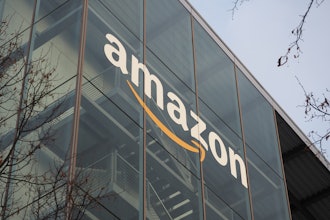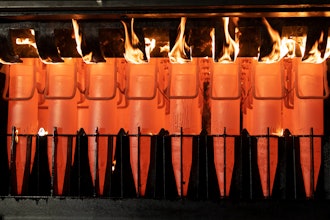
As 2022 comes to an end, a number of industry leaders are offering their thoughts on what to expect in 2023.
Jason Mann, VP of IoT at SAS, a provider of analytics services, sees four major trends that will drive the use of advanced analytics:
- In 2023, there will be greater availability of industrialized AI through low-code and no-code automated machine learning. The models will be provided through self-service marketplaces and enhanced with packaged services for customization and deployment.
- We’ll see more purpose-built digital-twin applications specialized for defined use cases in energy, infrastructure optimization, and industrial manufacturing.
- Within the industrial IoT environment, organizations will increasingly add computer vision and other AI technologies that can be used by operations professionals, not just IT staff and data scientists. CV initiatives will focus on yield improvement, operational efficiency and safety.
- Workloads will be distributed intelligently across hybrid environments. This will mean quicker adoption of IoT analytics at the edge to enhance decision making at the source.
Peter Maithel at Infor offers the following predictions specific to the automotive sector:
- Supply chain challenges will continue, affecting internal combustion engines as well as electric vehicles.
- The chip shortage, in particular, could affect 2 to 3 million vehicles. The impact will be higher for EVs, as they use approximately 30 percent more chips than ICEs.
- Higher interest rates, uncertain economic conditions, and greater regulatory burdens will drive financial pressures through the supply chain, which could lead to further disruptions at the sub-tier 1 level.
- Two key enablers of supply chain resilience and risk mitigation are connectivity and collaboration between automotive ecosystem participants. Data-driven software platforms that facilitate this, and deliver predictive and prescriptive insights using advanced analytics, artificial intelligence, and machine learning tools, will grow in importance.
- Supply chains will need to be revamped to support EV as well as ICE components. Recent U.S. legislation encourages localizing battery sourcing to reduce supply chain risk and qualify for government incentives/tax credits. This is a particular challenge for obtaining minerals, batteries, chips and other components from reliable, ethical and politically approved sources, as these products may not be easily available locally or from ‘friendly’ countries.
- EV manufacturers will struggle to juggle the supply and demand of battery materials, while containing costs, minimizing environmental impacts, and scaling up production. It’s the proverbial Catch-22 situation: increasing EV production means increasing demand for battery materials sourced from environmentally problematic mines, and processed and transported by means that emit high levels of CO2. The industry needs to look holistically beyond just tailpipe emissions to the environmental impact of the production, refining and transportation of the materials on a global scale.
- The sheer volume of the projected demand for battery raw materials means that the auto industry will need an additional 50 lithium, 60 nickel and 17 cobalt mines — but it can take up to 10 years and billions of dollars to get just one mine up and running (Automotive News, Oct 24, 2022). This reality will be a further constraint on supply into the foreseeable future.
- Apart from battery-related issues, the costs of e-drive components such as motors rose over 25 percent in 2021, and this trend is expected to continue.
- All of the above factors will push EV prices ever higher.
- Hydrogen will gain importance as an internal combustion fuel for commercial applications. Hydrogen internal combustion engines are a good option to replace diesel for trucking, dump trucks, snowplows, emergency vehicles, farm, construction, ports and the like.
- Battery recycling will be a growing challenge. According to some estimates, over 10 million batteries are projected to reach the end of their vehicle life by 2030. Even assuming that 90 percent will be repurposed for second-life uses such as grid energy storage, that will still leave 1 million batteries that will need to be recycled.
Molex, a leading provider of electronic components and connectivity solutions, sees the following for 2023:
- Automakers will make moves to enable Level 2 and Level 3 vehicle autonomy.
- Major investments in battery management, zonal architectures and EV charging stations will dominate.
- Emerging demand for Infrastructure advancements is expected to escalate, which will place greater emphasis on the need for intelligent sensors and high-speed connectors.
- AR/VR will leverage early success in the industrial sector, giving consumers a hint of what’s to come. It won’t be mainstream for five more years, but new offerings from Apple, Meta and others will illuminate the vision of what the near future will hold.
- Investments in Industrial IoT will grow. Robotics and AI will see a surge in usage, as businesses roll out investments made over the last few years.
- Supply chains for mobile devices will continue to expand away from China, resulting in incremental investment from major U.S. and Chinese device-makers into India.
- The migration towards Extended Reality (XR) will move data processing to the Edge, allowing inferencing to happen more frequently in real time to match performance expectations.
- Data privacy and security remain top priorities. Remote patient monitoring is becoming less about connectivity and more about actionable real-time information analysis, especially amid persistent privacy and security sensitivities.
- Mental-health diagnostic applications will emerge. Post-COVID emphasis on well-being has opened the door wider for mental health diagnostic solutions.
James DeMuth, CEO of Seurat Technologies, has the following thoughts on trends for the upcoming year:
- Localization of manufacturing near to customers will reduce economic and environmental costs. Currently, the cost to ship a 40’ container from Asia to the U.S. West Coast is 5X more than pre-pandemic levels.
- Unpredictable policymaking and inflationary pressures will have less impact on companies that strategically place manufacturing of key components within the U.S. and near to assembly plants.
- Domestic manufacturing will be emphasized as a matter of national security.
- Legislative and executive tailwinds to advance the manufacturing industry came in 2022, in the form of the CHIPS and Science Act and the Inflation Reduction Act. Reshoring manufacturing - and reaping the benefits that come with it - will require continued legislative support and streamlined implementation.
- As renewable energy continues to become more cost-competitive, manufacturing processes that utilize clean energy will flourish.
- As ESG climate-disclosure reporting standards come into effect in 2023, manufacturers will need to closely evaluate their materials, suppliers and processes, and make a shift toward more sustainable choices for every step of production. A recent global survey found that 85 percent of organizations are concerned about reducing their greenhouse gas emissions, yet only 11 percent have cut their emissions in line with their ambitions over the past five years.






















